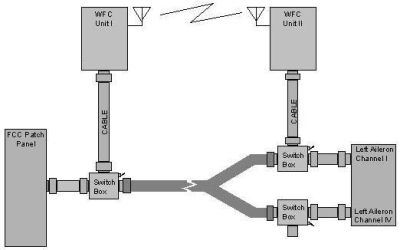Historical

NASA Dryden Flight Research Center contracted Invocon to develop a proof-of-concept system that would allow the control of aircraft with radio frequency links between the pilot controls and the flight control surfaces on the wings.
Nicknamed the “Wireless Flight Control System” (WFCS), the requirement involved the design of suppressed carrier, spread spectrum, high redundancy, data links that could be demonstrated first on a ground-based test bed and later flown on a NASA research aircraft.
Invocon developed a prototype demonstration of a system to supplement or replace the wired connections that control the flight system of an aircraft with radio frequency (RF) links. The concept involved the insertion of spread spectrum radio frequency data links into the flight control paths between the flight control computers (FCCs) and the actuators for the flight control surfaces at the ailerons, rudder, and elevators.
For the concept feasibility demonstration, a prototype system was designed for and demonstrated on the F-18 Iron Bird test facility at Dryden Flight Research Center to establish the ability of the RF links to provide adequate control capability. For demonstration purposes, the testing was limited to the signal paths between the FCCs and an aileron on the Iron Bird. The system performed reliably after installation.
The ultimate goal for the technology is to develop a closed-loop wireless flight control system that will back up the wired system and provide redundancy for enhanced safety and reliability; or replace the wired system and decrease the size, weight, and cost of the aircraft. An operational system based on this concept would result in increased airframe performance, lower cost, and improved resistance to local damage from combat or terrorist activities.
